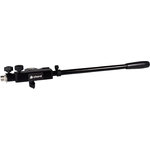Microphones guide
Whether on stage, in the studio, place of worship or a conference, choosing the correct microphone for the job will be the difference between being heard and being heard clearly.
How to choose the right microphone
There are many different types of microphone available, which can be quite confusing initially. Many are designed to suit a particular type of recording or sound reinforcement situation and it is important to select the best type of microphone for the task at hand.
Stage Work
Stage performance situations can be brutal for microphones, which can be dropped or knocked inadvertently. Dynamic microphones are by far the most rugged type and are more likely to survive the arduous stage environment than condenser mics.
With PA systems, it is important to use directional microphones with cardioid or hypercardioid polar patterns to reject peripheral sound, which may lead to feedback from the loudspeakers. Wireless handheld and neckband mics offer the most freedom for performers to move around and use the whole stage.
For wider stage coverage, pencil condensers make excellent overhead microphones for chorus lines and shotguns can pick out subjects at a distance but may be more prone to feedback.
Conference and Meetings
Microphones are often used with sound reinforcement for a speaker or chairperson addressing an audience.
Conference microphones usually have condenser capsules for sensitive pickup and goosenecks to enable them to be directed towards the orator. Placed as a left and right pair on a lectern, these can provide useful speech reception whilst keeping hands free during presentations.
Alternatively, discreet neckband microphones combined with wireless systems o er more freedom of movement and maintain excellent voice pickup.
Studio Recording
In the studio, the primary task for a microphone is to capture the most accurate sound possible. For this purpose, condenser microphones can outperform dynamic types for frequency response and sensitivity. Large condenser microphones with high quality internal preamps are favourite with most studio engineers.
Many of these offer switchable pads and filters and even multiple response patterns, making them useful for many different voices or instruments. Some instruments have a very loud output (e.g. drums, brass etc.) which are better handled by dynamic instrument microphones and, in some cases, pencil condensers offer the ideal pickup for high pitched instruments. Wireless is usually not a requirement in the studio.
Broadcast
For camera work, shotgun microphones have a very narrow polar pattern, which can accurately focus in on a subject being lmed. These have condenser capsules for high sensitivity and many come with hot-shoe mounts for attaching to the camera. Lavalier microphones offer the most discreet wireless solution and will offer adequate speech pickup for recording.
Since there are no large speaker cabinets involved, feedback is normally not an issue. To record a wider area, boundary microphones or arrays of pencil condensers can be used.
As with conference work, lectern microphones are equally useful for the same purpose in a broadcast application.
Surveillance
Usually, surveillance means secret recording and here, boundary microphones are useful for integration into the surroundings and shotgun microphones can listen in at a distance without being detected.
Things to lookout for
Frequency response
A microphone’s frequency response measured in Hertz, refers to the range from lowest to highest that a microphone will pick up. A microphone with a frequency response range of around 80Hz - 15kHz would make a good choice for a vocal mic.
Alternatively drums, for example, would be more suited to a lower frequency starting around 50Hz and cymbals with a high frequency reaching up to 20kHz.
Sensitivity
Sensitivity refers to how quiet a sound the microphone can detect. The lower the number, the more sensitive the microphone is.

Contents
Related Items
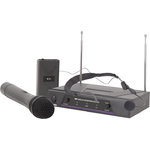
Handheld & Neckband VHF Wireless System
174.1 + 175.0MHz
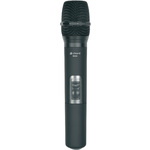
Handheld Transmitters for NU20 Systems
864.8MHz
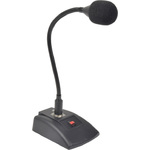
COM41 Dynamic Paging Microphone
COM41
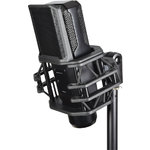
CM25 Studio Condenser Microphone
CM25
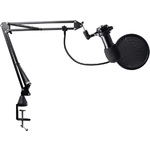
USB Studio Microphone Kit
UMK-7
